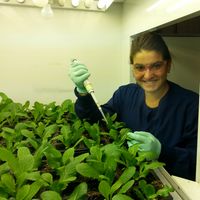In Australia, the economic impact of vertebrate pest species is estimated to be 720 million Australian dollars per year. Changes in land use and habitat formation due to these invasive species have led to the extinction of 22 animal species as well as the critically endangered status for 43 others. In Australia, 2 out of the 22 invasive mammalian species are predators including the European red fox and the domestic cat.
Feral cats are defined as free-living, independent of humans and reproducing in self-perpetuating populations. Feral cats are not to be confused with stray cats, which were considered previous domesticated housecats no longer interacting with humans. There is some concern that the invasion of feral cats in Australia have contributed to the decline in certain bird, mammalian and reptile species. Reintroduction of these species have failed on more than one occasion due to the extensive predation of feral cats.

Researchers sought to determine whether cats arrived in Australia during pre- or post- European settlement. They also wanted to determine if there was any mixture of cats that were introduced to Australia during different time periods. They compared the genetic structure of feral cats from mainland Australia, seven Australian islands as well as feral cats from Southeast Asia and Europe. Most samples were genotyped using 12 microsatellite loci, including a gender-identifying sequence tagged from the Y chromosome. DNA sequences were also obtained from mitochondria for comparison.
Their results indicated that feral cat populations on Australian Islands including Cocos Island, Christmas Island, Tasman Island, Flinders Island and Dirk Hartog Island were distinct from populations on the Australian mainland as well as Tasmania. Bayesian assignment approach grouped the mainland and Tasmanian samples with the Southeast Asian samples. Cats from the Tasman, Flinders and Coco Islands has similar ancestors where cats from Christmas Island and Dirk Hartog Island were distinctive from all other populations.
Researchers concluded that there is a mainly European origin of cats in Australia however; there may have been a possible secondary introduction of cats from Asia. Analyses of samples from the Australian outlying islands indicates that there are founding populations in these areas. This research provides an important timeframe for the impact of feral cats on native species in Australia.
Source:
BMC Evolutionary Biology


![Master Lab Weighing: Accuracy, Compliance & Audits [eBook]](https://d3bkbkx82g74b8.cloudfront.net/eyJidWNrZXQiOiJsYWJyb290cy1pbWFnZXMiLCJrZXkiOiJjb250ZW50X2FydGljbGVfcHJvZmlsZV9pbWFnZV85MWRmZmRjMDIwNDBlMWJjMzYwN2ZiYWY2ZjI4ZGMzYzBmZGMwZGMyXzkxOTcucG5nIiwiZWRpdHMiOnsidG9Gb3JtYXQiOiJqcGciLCJyZXNpemUiOnsid2lkdGgiOjcwMCwiaGVpZ2h0IjozNTAsImZpdCI6ImNvdmVyIiwicG9zaXRpb24iOiJjZW50ZXIiLCJiYWNrZ3JvdW5kIjoiI2ZmZiJ9LCJmbGF0dGVuIjp7ImJhY2tncm91bmQiOiIjZmZmIn19fQ==)






